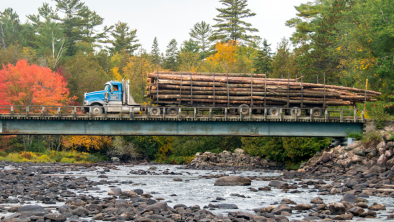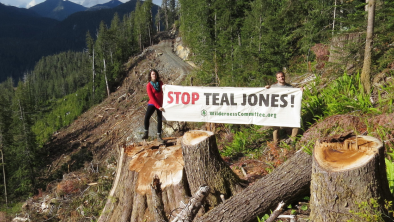Seek out new timber in marginal areas, report urges B.C. industry
Wednesday, August 15, 2012
Globe and Mail
A new report on the dwindling timber supply in British Columbia’s central Interior recommends tapping into “marginally economic forest types,” such as areas with fewer trees that have been significantly affected by fire or the pine beetle, or are harder to access.
The report, prepared by the Special Committee on Timber Supply and tabled Wednesday, comes after a month of research and public hearings in central B.C. and Vancouver. As the province anticipates a dramatic drop in timber supply in the wake of the mountain pine beetle outbreak, the report calls for a thorough inventory of such marginal areas – something NDP opposition forestry critic and committee deputy chair Norm Macdonald says the Liberal government did not adequately address in the past.
“The lack of proper care of the land means they have neither the information nor the capacity to make informed decisions,” he said. “We don’t actually know, accurately, what’s happening on the land base. It’s inexcusable, really.”
Mr. Macdonald also referenced reports by the Forest Practices Board and B.C. Auditor-General John Doyle that suggested insufficient reforestation of harvested areas.
The province’s supply of timber has dwindled steadily since the pine beetle infestation began in 1999. In the next 10 to 15 years, the timber supply is forecasted to be 20-per-cent below pre-infestation levels – a reduction that may last up to 50 years. The projected drop in the annual allowable cut of timber could also threaten the closure of an estimated eight sawmills, the report states.
An all-party committee of seven MLAs was appointed in May to conduct consultations with the public and local governments.
It reported back with 22 recommendations on how to address the loss of timber.
Other recommendations include that the province: design a “science-based review process” to assess sensitive forest areas; engage communities and first nations in future forest plans; and work with industry to find more ways to grow wood.
“I’m optimistic about the future of the forest industry,” said committee chair John Rustad. “Our forestry industry will go through a change, but I think it will remain one of the backbones of the B.C. economy, and certainly for rural B.C.”
The committee was not mandated to provide a recommendation on the rebuilding of the Babine Forest Products sawmill in Burns Lake, which was destroyed in an explosion and fire in January.
Steve Thomson, minister of forests, lands and natural resource operations, said it was “unfortunate” to hear Mr. Macdonald’s criticism following a report that had unanimous support from all committee members.
“The committee looked at the work that’s been done in ramping up inventory efforts, spending over $9-million this year focusing on the mountain pine beetle-impacted areas, the fact that the industry is world-recognized for our standards in the certification process,” he said. “What my focus is, is to work forward on the recommendations, to take the direction of the committee and put all of our efforts into the opportunities that exist.”
Mr. Thomson said the ministry will develop an action plan and timeline within a week to determine how it will respond to the recommendations.


